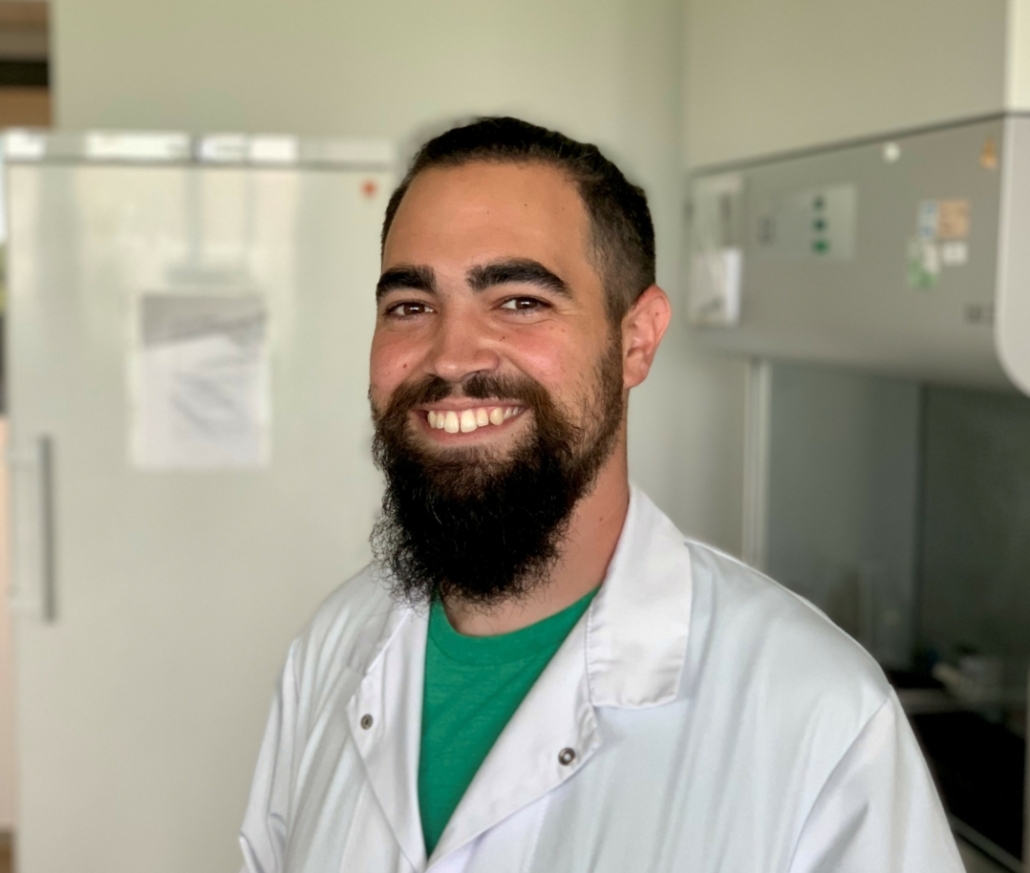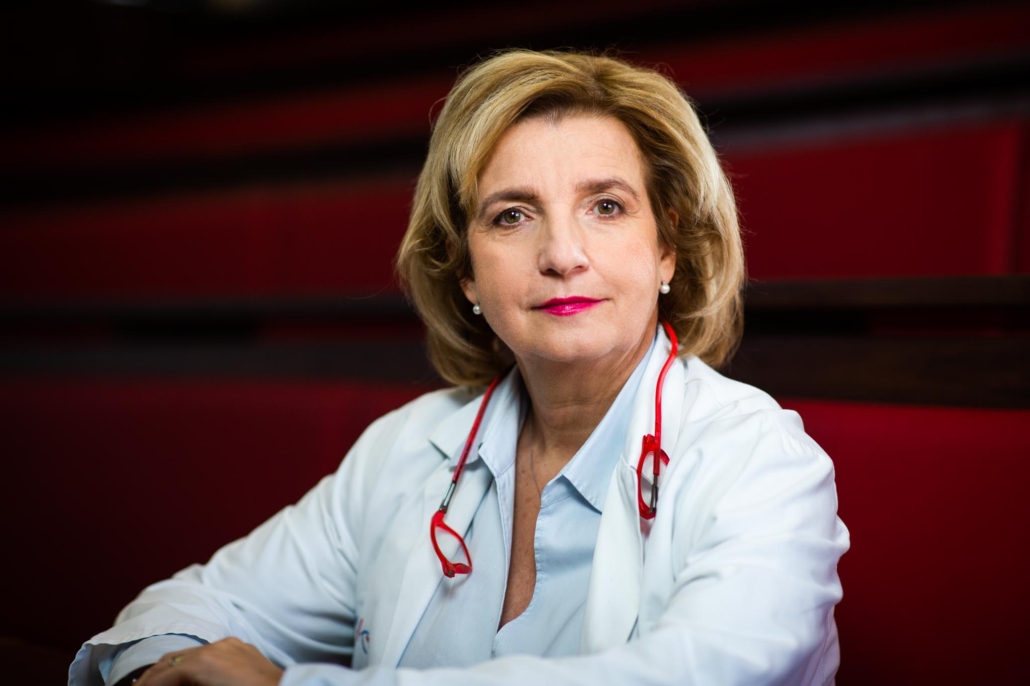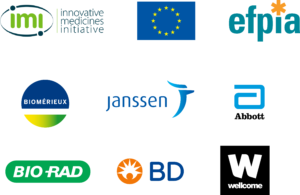Author Archive for: Leandra
About Leandra
This author has not written his bio yet.
But we are proud to say that Leandra contributed 60 entries already.
Entries by Leandra
WHO AWaRe Antibiotic Book
/in News/by LeandraInterview with PhD student Juan Pablo Rodriguez Ruiz
/in Interviews/by LeandraJuan Pablo Rodriguez Ruiz is a 27-year-old PhD student at the Laboratory of Medical Microbiology of the University of Antwerp. He studies the microbiome of patients suffering from Respiratory Tract Infections and the effect of antibiotic intake in these patients within the VALUE-Dx project. Juan Pablo has a Bachelor in Biotechnology at Universidad Pablo de Olavide (Sevilla) and a Master in Microbiology at Universidad de Granada.
What does your work for VALUE-Dx entail?
Juan Pablo: I’m part of Work Package 2 (WP2), the microbiology side of the VALUE-Dx project. We mainly perform substudies derived from the main trials ADEQUATE-paediatric and PRUDENCE in WP4. Within these substudies there is a metagenomics part, revolving around the microbiome related to the antibiotic treatments in the trials. There is also another part revolving around biomarkers but I’m not involved in that. Lastly, we biobank the samples from the trials. My main role is to perform the metagenomics of the microbiology studies in the lab. We sequence the DNA of the samples we receive from the trials and evaluate the effect of the antibiotic treatments.
How long have you been working on the project?
Juan Pablo: Since the start of VALUE-Dx, so about four years ago. In the beginning, I spent a month at the University of Edinburgh, one of the VALUE-Dx partners. They are creating a technical roadmap with recommendations for short- and long-term goals to help companies and research institutions prioritize investment decisions in the field of CA-ARTI diagnostics. In Edinburgh, I did research into companies that are developing new diagnostic tests for respiratory tract infections (RTI).
Currently, at the Laboratory of Medical Microbiology at the University of Antwerp, my job is to make sure that everything is ready for when the samples arrive. I take care of setting up the DNA extraction and sequencing protocols, the bioinformatics pipeline, etc.
What upcoming tasks do you have for VALUE-Dx?
Juan Pablo: We are in the process of receiving the samples from the trials. Once we receive them, we can start the lab work. In ADEQUATE-paediatric, the patients are children presenting with community-acquired pneumonia in the emergency room. They are randomised to either undergo the diagnostic tests or the usual care. With regards to the substudy in which I am involved, we ask for oropharyngeal samples at the randomization and one month later and we want to see whether the antibiotics that have been prescribed have an effect on the microbiome and the resistance in the oropharynx.
PRUDENCE works with patients in long term care facilities. If these patients develop respiratory tract infections they get tested, depending on what group they are randomised in. For the substudy, we take additional samples in order to see the effect of antibiotic prescriptions.
What did you find most challenging about the project? What has been the most exciting?
Juan Pablo: Coordinating a multi-centre, international study is of course very challenging. In my case specifically, the delay of the samples due to the COVID-19 pandemic posed a big challenge. The start of the trial was delayed for more than one year. Now, the recruitment is ongoing so, step by step, we’re getting there. On the other hand, in other work packages, there has already been a lot of work done.
For me, it was very exciting to get everything ready for when the samples arrive. This includes preparing the right protocols, sequencing, bioinformatic tools, etc. That was also the upside of the delay, we had more time to put everything together with great care.
-
About
Juan Pablo Rodriguez Ruiz
Juan Pablo graduated as a Bachelor in Biotechnology at Universidad Pablo de Olavide (Seville) in 2016 and as a Master in Microbiology at Universidad de Granada in 2018. As a PhD student at the Laboratory of Medical Microbiology, he studies the microbiome of patients suffering from Respiratory Tract Infections and the effect of antibiotic intake in these patients.

More interviews
Does diagnostic testing always decrease antibiotics prescriptions?
/in News/by LeandraDoes diagnostic testing always decrease antibiotics prescriptions?

In August 2022, VALUE-Dx published a new article in the European Journal of Health Economics with the following title: ‘Does diagnostic testing always decrease antibiotics prescriptions?’. The conclusion of this scientific paper is that we should be very careful when we assert that point-of-care diagnostic testing (POCT) reduces antibiotics prescriptions as there are situations in which the opposite effect occurs.
Why POCT?
Empiric prescription as a treatment for infectious diseases in community care settings has caused antibiotics to be overprescribed, resulting in an increase of antimicrobial resistance (AMR). In order to reduce antibiotics prescription, point-of-care diagnostic testing (POCT) has been suggested.
In this new VALUE-Dx article, a stylised static theoretical economic model was used to analyse whether POCT always decreases antibiotics prescriptions. The interaction of a group of doctors who differ in their level of concern about AMR when prescribing with a firm selling a POCT was taken into consideration. The price set by the manufacturer and doctors’ decision to employ POCT was characterised.
Results of the study
It is widely accepted that the use of diagnostic testing to guide antibiotics prescription in community care settings reduces the number of antibiotics prescriptions. However, the model used in this article shows that we should be very careful with recommending the use of POCT to reduce antibiotics prescriptions as we may end up with the opposite result.
In fact, the number of antibiotics prescriptions is not always lower. It depends on the distribution of the doctors’ concern about AMR as there is a proportion of doctors who use POCT and then prescribe antibiotics, while other doctors change their prescribing behaviour after using POCT. They stop giving antibiotics to patients who do not benefit from them. When the proportion of patients who need antibiotic treatment is higher than the proportion of doctors who use POCT and stop prescribing unnecessary antibiotics, the number of antibiotics prescriptions is larger.
These analyses convey the message that we should be very careful when we assert that POCT reduces antibiotics prescriptions as there are situations in which the contrary effect is produced.
You can read the publication here.
Interview with Professor Bojana Beović
/in Interviews/by Leandra1. What is your role in the AMR field and what does it entail?
I am the Chair of the Antimicrobial Stewardship Unit at the Department of Infectious Diseases at the Ljubljana University Medical Centre. In addition, I am the chair of the so-called Intersectoral Coordination Mechanism for the Control of Antimicrobial Resistance at the Ministry of Health of Slovenia. This is a multidisciplinary group that manages AMR activities in the country. It includes the medical sector, the veterinary sector, and environmental specialists.
2. Why should people be concerned about AMR?
It is a well-known fact that antimicrobial resistance reduces the quality of care. Also in Europe, several analyses showed that AMR places a considerable burden on the healthcare system, including excessive mortality. Especially during epidemics, there was less attention paid to antimicrobial resistance and the conditions in many hospitals did not allow for its control, leading to a sharp increase. We will have to compensate for the loss caused by the COVID-19 pandemic in the coming years. In addition, the attention of the general population and media shifted from AMR to the Coronavirus disease, despite our efforts during the World Antibiotic Awareness Week last November.
3. What is the expected impact of the work you’re doing?
I have been working in this field for more than 20 years, and we were able to stabilise antimicrobial use and antimicrobial resistance through various activities. This does not mean that our job is done. I believe that stable daily activities are necessary in order to get the situation under control in a long term perspective. Therefore, in my opinion, the most important achievement is that antimicrobial stewardship is recognised and accepted as one of the normal daily activities in the hospital.
4. With regards to AMR, what’s the context in your country?
Eurobarometer data show that awareness of general public has decreased. In 2019, the Slovenian Government adopted a strategy for combating antimicrobial resistance, but because of the pandemic, many activities were not undertaken. The problem is that fighting AMR is a political commitment that is not followed by any funding. In Slovenia, most activities are still voluntary or financed from other sources and there is no financial support for the programmes of the government or the Minister of Health.
5. How did the COVID-19 pandemic impact the research on AMR?
It was obviously very difficult to cover the shifts during the pandemic with sufficient staff. Most of the doctors and microbiologists were involved in various COVID-19 activities. However, we were able to carry out two analyses. First, we sent out a survey asking doctors on an international scale whether they prescribed antibiotics to patients with COVID-19. The response from my colleagues in Slovenia showed relatively modest use. In addition, we conducted an international point prevalence study, comparing antibiotic use in COVID-19 patients in the ICU and in ordinary wards in Serbia, Croatia, Slovenia, and Italy. Our results showed that antibiotic use in Slovenia was relatively modest compared to other countries. We do not have data on antimicrobial resistance yet, but we are aware of a number of extremely resistant bacteria that were previously absent from some intensive care units in Slovenia, despite a generally relatively modest use of antibiotics. It is probably a consequence of antibiotic use and poor infection control during the most intensive peaks of the pandemic.
-
About
Bojana Beović
Prof Bojana Beović, MD, PhD has been employed at the Department of Infectious Diseases at the University Medical Centre in Ljubljana since 1986. Since 2008 she is the head of the Antibiotic Committee in UMC Ljubljana. At the European Society of Clinical Microbiology and Infectious diseases (ESCMID), she was the honorary secretary of the ESCMID Study Group for Antibiotic stewardship (ESGAP) from 2009 to 2014. At the moment, she is the head of the ID Consultancy Service, chairs the Medical Chamber of Slovenia and is full professor of infectious diseases at the Medical School, University of Ljubljana. Her current focus of interest in research is antibiotic stewardship, and antibiotic therapy.

More interviews
WAAW 2022 theme announced
/in News/by Leandra

Social Media
This project has received funding from the Innovative Medicines Initiative 2 Joint Undertaking under grant agreement No 820755. This Joint Undertaking receives support from the European Union’s Horizon 2020 research and innovation programme and EFPIA and bioMérieux SA, Janssen Pharmaceutica NV, Abbott, Bio-Rad Laboratories, BD Switzerland Sàrl, and The Wellcome Trust Limited.
